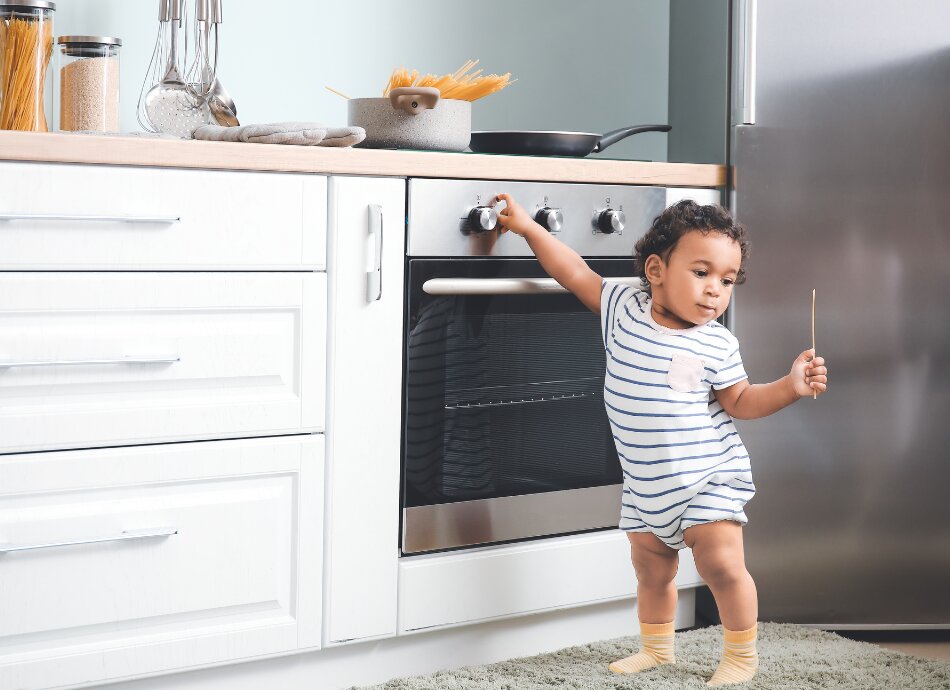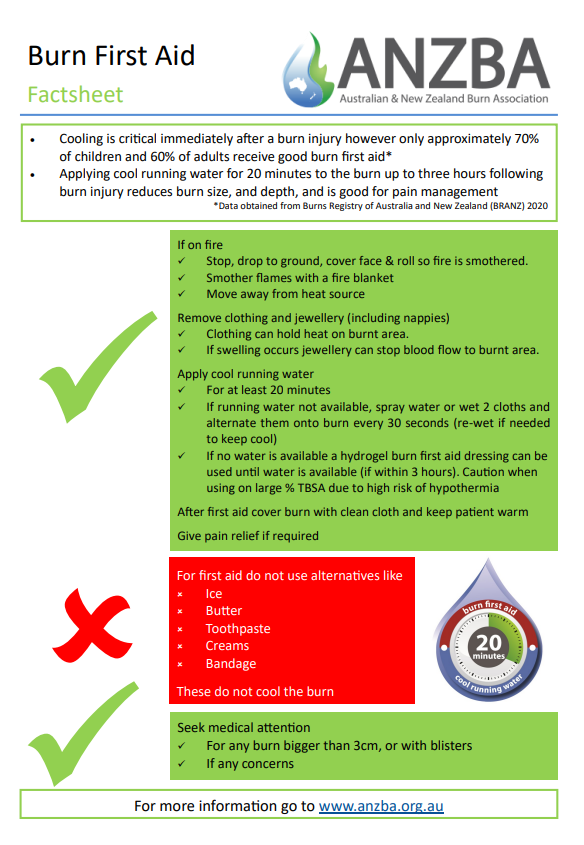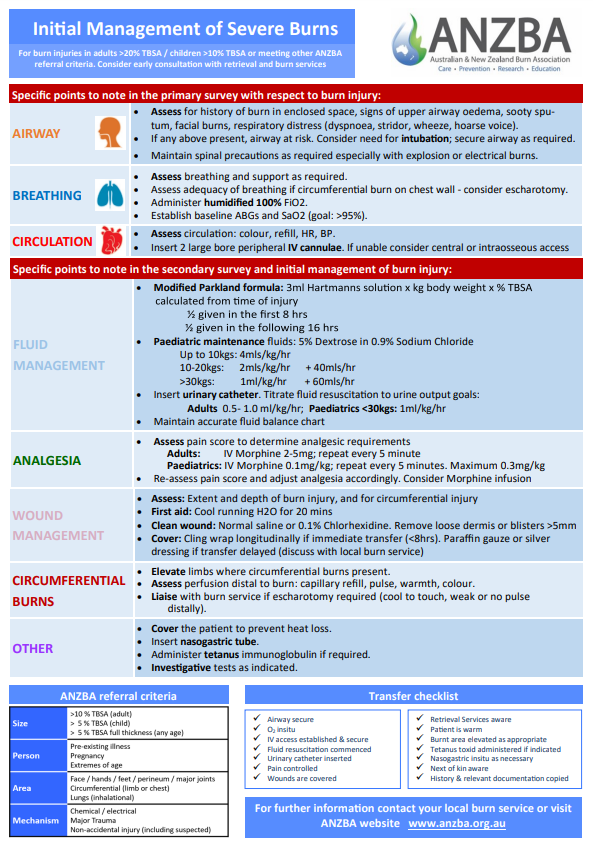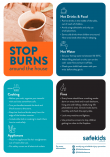A thermal burn is a type of burn resulting from making contact with heated objects or liquid, such as boiling water, steam, hot cooking oil, fire and hot objects. When a burn is caused by contact with hot liquid, it is called a scald.
Hot water scalds are the most common type of thermal burn affecting children. In adults, thermal burns are most commonly caused by fire.
What are the signs someone has been burned?
Signs someone has been burned include the following, although they may not experience all of these:
- severe pain – although a deeper burn may be less painful due to destruction of nerve endings
- red, peeling or blistered skin (or blackened or waxy white) – exact appearance depends on both depth of burn, what caused it and time from initial injury
- watery fluid weeping from the injured area
- pale, cold and sweaty, feeling faint and dizzy, and complaining of nausea or vomiting, ie, signs of shock
- swelling of the injured area may appear later.
What do I do if someone has a thermal burn?
There are 3 key steps to follow if someone has a burn injury:
- Stop the burn.
- Cool the burn.
- Cover the burn.
1. Stop the burn
Remove the heat source from the person or the person from the heat source, whichever is easiest and safest. If any clothing is wet with hot liquid or a chemical splash, remove it quickly and carefully as part of stopping the burn. Don’t remove clothes that are stuck to the burn.
2. Cool the burn
Immediately cool the affected area for up to 20 minutes using cool running water from a tap or shower. If there is no water, use any cool clean fluid, such as beer or soft drink. The burned part can be put in a bowl or bucket of cold water if this is easier than pouring water over the burn. Remember to keep the person warm.
A first aid burn gel may be used if water is not available.
Remove any tight clothing, watches, rings or jewellery from the burned area, if possible, because of the risk of swelling and tightening.
If the person is feeling faint lie them down.
|
Call 111 for an ambulance if:
|
- the person is badly injured
- the burn is causing significant pain
- the burn involves their eyes
- the burn is larger than half the person’s arm.
|
See a doctor if:
- the burn is causing ongoing significant pain
- involves the face, hands, joints or genitals.
|
3. Cover the burn
After cooling the injured area for up to 20 minutes, apply a sterile dressing. Use a dressing that doesn’t stick to the skin. Clean plastic kitchen wrap can be used as a temporary dressing. Cover the burn but don’t wrap the dressing around the area.
Video: New Zealand Red Cross - burn dressing
(NZ Red Cross, NZ, 2020)
What should I not do when someone is burned?
- Don’t apply ice to the burn.
- Don’t try to remove fabric that is stuck to a burn.
- Don’t break blisters or remove peeled skin
- Don’t apply creams, ointments, lotions, toothpaste or butter to a burn. This will have to be removed later and may cause an infection and delay healing.
- Don’t put small children or babies in a cold bath or shower for a full 20 minutes. This can cause hypothermia.
- Don’t use adhesive (sticky) tape on the skin around the burn because this may cause further tissue damage.
Clothing on fire
If someone's clothing is on fire:
- STOP, DROP and ROLL the person before checking for burns and cooling the injury.
- Stop the burn by smothering the flames with a coat or blanket and then get the person onto the ground and roll them to extinguish the flames.
Burns of the mouth or throat
If someone has been accidentally exposed to fire or heated gases, their mouth and airway may be damaged. There may be signs of burning around their lips, nose, mouth, eyebrows or eyelashes. A dry cough or hoarse voice is an early sign of airway injury.
- Move the person to a safe area if it is safe for you to do so – preferably into fresh air.
- Cool the skin injury. Pour running water over the burn for 20 minutes.
- If there is any breathing difficulty, help them find the best position for easy breathing, with their head and chest raised.
- Call 111 for an ambulance.









